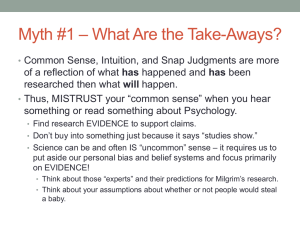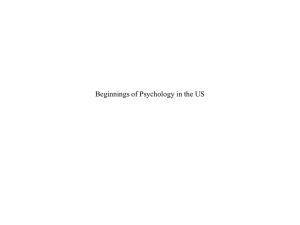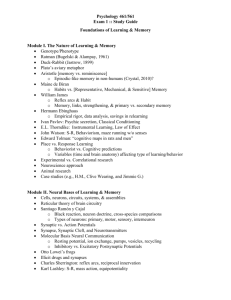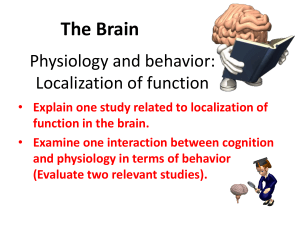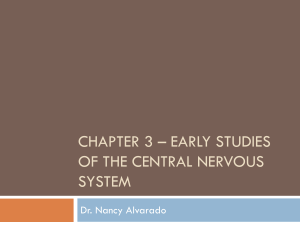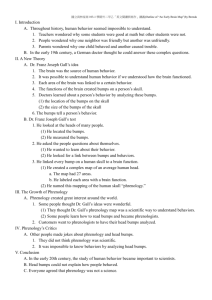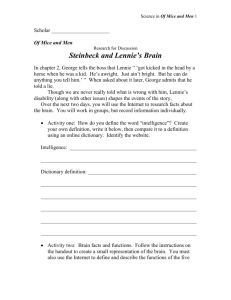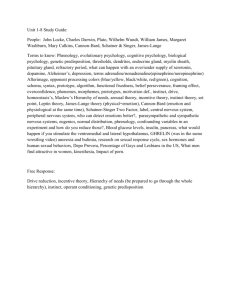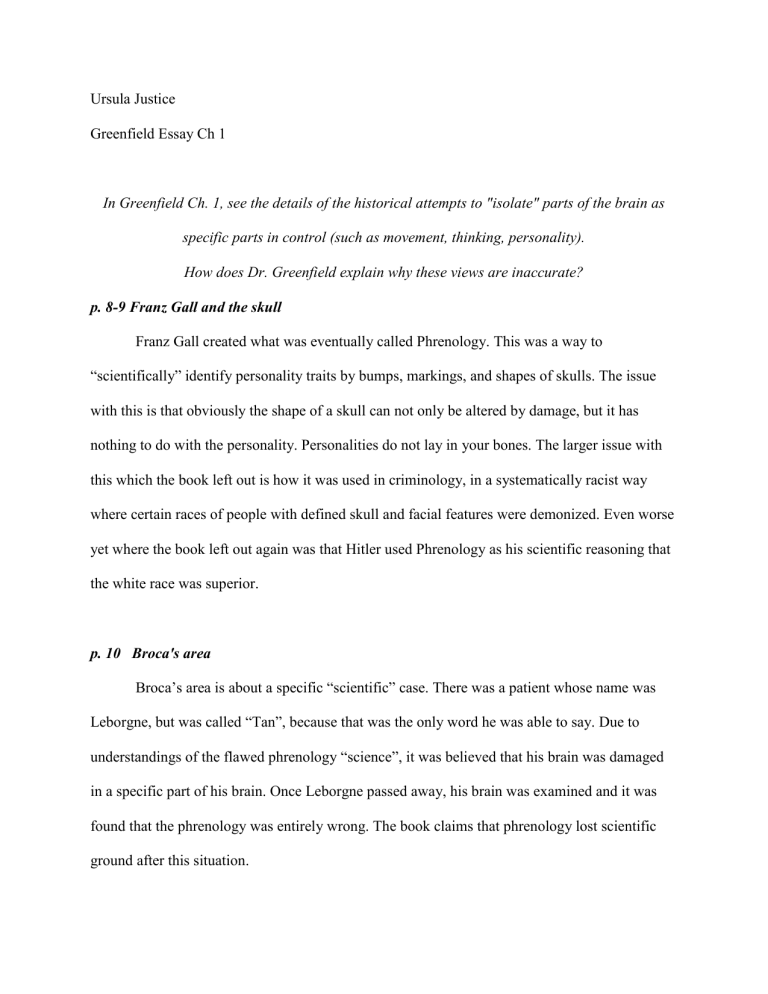
Ursula Justice Greenfield Essay Ch 1 In Greenfield Ch. 1, see the details of the historical attempts to "isolate" parts of the brain as specific parts in control (such as movement, thinking, personality). How does Dr. Greenfield explain why these views are inaccurate? p. 8-9 Franz Gall and the skull Franz Gall created what was eventually called Phrenology. This was a way to “scientifically” identify personality traits by bumps, markings, and shapes of skulls. The issue with this is that obviously the shape of a skull can not only be altered by damage, but it has nothing to do with the personality. Personalities do not lay in your bones. The larger issue with this which the book left out is how it was used in criminology, in a systematically racist way where certain races of people with defined skull and facial features were demonized. Even worse yet where the book left out again was that Hitler used Phrenology as his scientific reasoning that the white race was superior. p. 10 Broca's area Broca’s area is about a specific “scientific” case. There was a patient whose name was Leborgne, but was called “Tan”, because that was the only word he was able to say. Due to understandings of the flawed phrenology “science”, it was believed that his brain was damaged in a specific part of his brain. Once Leborgne passed away, his brain was examined and it was found that the phrenology was entirely wrong. The book claims that phrenology lost scientific ground after this situation. p. 10-11 Wernicke’s aphasia Carl Wernicke piggy backed off of the “Tan” research. His studies also had to do with patients who suffered speech issues, but his patients were different in the regard that his could make many sounds, but it was spoken as “gibberish”. In an unintentional hit to further discrediting phrenology, he discovered that his patients had brain damage in different areas than “Tan” did, showing that multiple parts of the brain were involved with speech and that there were not specific parts of the brain that exclusively deal with one area of the person. p. 11-12 Hughlings-Jackson John Hughlings-Jackson believed in a hierarchy of brain operations. He believed that there were sophisticated parts of our brain that kept “primitive” drives in check. This is flawed in the sense that as the book pointed out, there is no one mini brain making executive choices for behavior. p. 12-13 MacLean’s hierarchy Paul Maclean had a theory of layered brain function as well, but this was less philosophical and more like phrenology in a sense that these areas of function had a home in parts of the brain. The brain stem was classified as the primitive reptilian, which had the duty of “instinctive behavior”. The old mammalian was the middle of the brain and controlled specific behavior. The new mammalian was the outer layer of the brain, and it controlled rational thought. The biggest flaw with this theory is that he created the formula, to fit the answer. The book talks about how people were acting at political protests, and how this theory talks about group think behavior. This theory however skips factual scientific evidence of any part of the brain housing specific group behavior. Greenfield explains that the issues with theories that attempt to isolate specific traits to parts of the brain, is that though each part of the brain is responsible for something, there is a lot of overlap with everything. Each part of the brain does a part of a overall job, multiple parts of the brain communicate with each other to complete the task. On page 29 a great example of how four different parts of the brain work together to see words, read words, speak words and generate verbs. Phrenology was harmful, inaccurate, and thanks to science eradicated.
